In this large-format work for the artist, Eugène Brouillard presents a poetic and atmospheric vision of Lyon, seen from the heights of Caluire. The city unfolds under a changing sky, crossed by the Rhône River and dominated by the majestic silhouette of the Basilica of Fourvière.
A specialist in urban and river landscapes, Brouillard captures with great sensitivity the effects of light and atmosphere. The Rhône, occupying a central place in the composition, reflects the variations of the sky and enhances the depth of the scene. In the distance, the basilica gently emerges from the mist, standing as a spiritual and architectural symbol of the city.
Thanks to a panoramic viewpoint, the artist harmoniously integrates the surrounding nature and the urban space, offering a broad and balanced view of the landscape. His technique, characterized by broad brushed strokes sometimes close to pointillism, gives the painting a luminous vibration that becomes even more striking when viewed from a distance.
The palette, dominated by greens, ochres, and bluish greys, reveals a subtle exploration of atmospheric variations, creating a misty and peaceful mood. The treatment of the river, with flat areas and delicate reflections, naturally leads the eye towards the background cityscape, where the outlines merge into the light.
Between urban modernity and the gentle flow of the landscape, this composition perfectly illustrates Eugène Brouillard’s ability to renew the classical landscape through a personal, sensitive, and innovative approach.
Born in Croix-Rousse in 1870, Brouillard began his career as a designer in a lace factory. At just 14 years old, he worked for Dognin, a French industrial company specializing in the manufacture of tulle and lace.
In 1890, at the age of 19, he exhibited for the first time at the Salon des Beaux-Arts in Lyon, presenting a charcoal drawing titled Sous-bois, depicting a landscape of Tassin, with the Izeron river in the foreground. In 1898, he partnered with Bruiset to open a drawing studio, but the latter passed away the following year. Brouillard then became close to the Routier-Chavan company, which led to numerous commissions and the need to hire workers to meet demand.
In 1922, he received the commission to decorate the banquet hall of the 3rd arrondissement Town Hall in Lyon with 18 large panels, creating a fresco titled Lyon, Cité des Eaux, measuring 66 meters in length.
Brouillard’s favorite subjects were landscapes with particular atmospheres—sunsets, misty scenes, riverbanks, as well as views from the Tête d'Or park. He had a particular fondness for still lifes. He also painted Lyonnais landscapes and scenes from the Dombes, featuring mysterious ponds and marshes, bordered by lush vegetation and twisted, deformed trees.
His inspiration came from nature as well as from the works of Poussin, the Barbizon painters, especially Camille Corot, and local artists like Baudin, Ravier, and Vernay. Describing his technique, he referred to it as "cuisine," full of unexpected and personal recipes. By around 1912, his works began to show the characteristic grays of his palette, and he started painting with a palette knife, using large, broad strokes to add texture and depth to his landscapes.




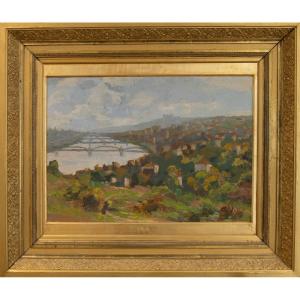




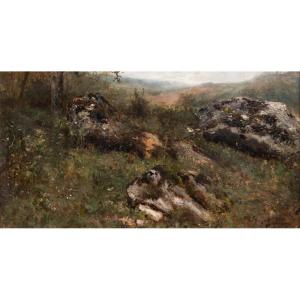


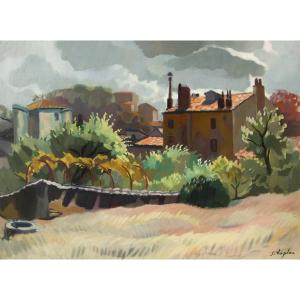
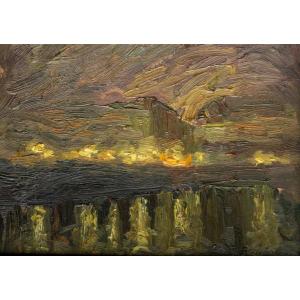










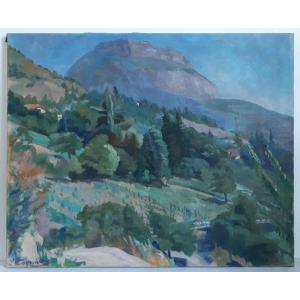





 Le Magazine de PROANTIC
Le Magazine de PROANTIC TRÉSORS Magazine
TRÉSORS Magazine Rivista Artiquariato
Rivista Artiquariato